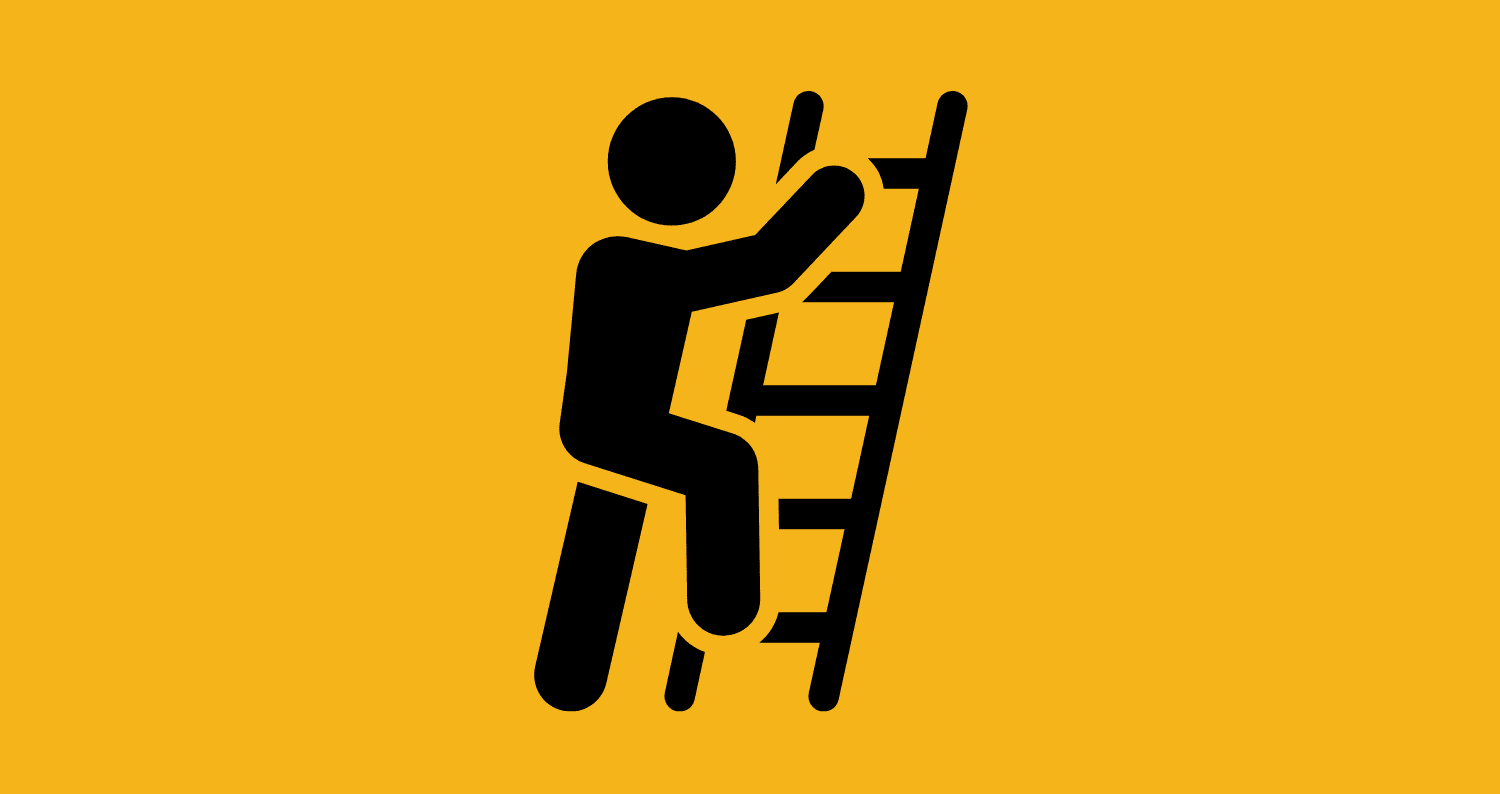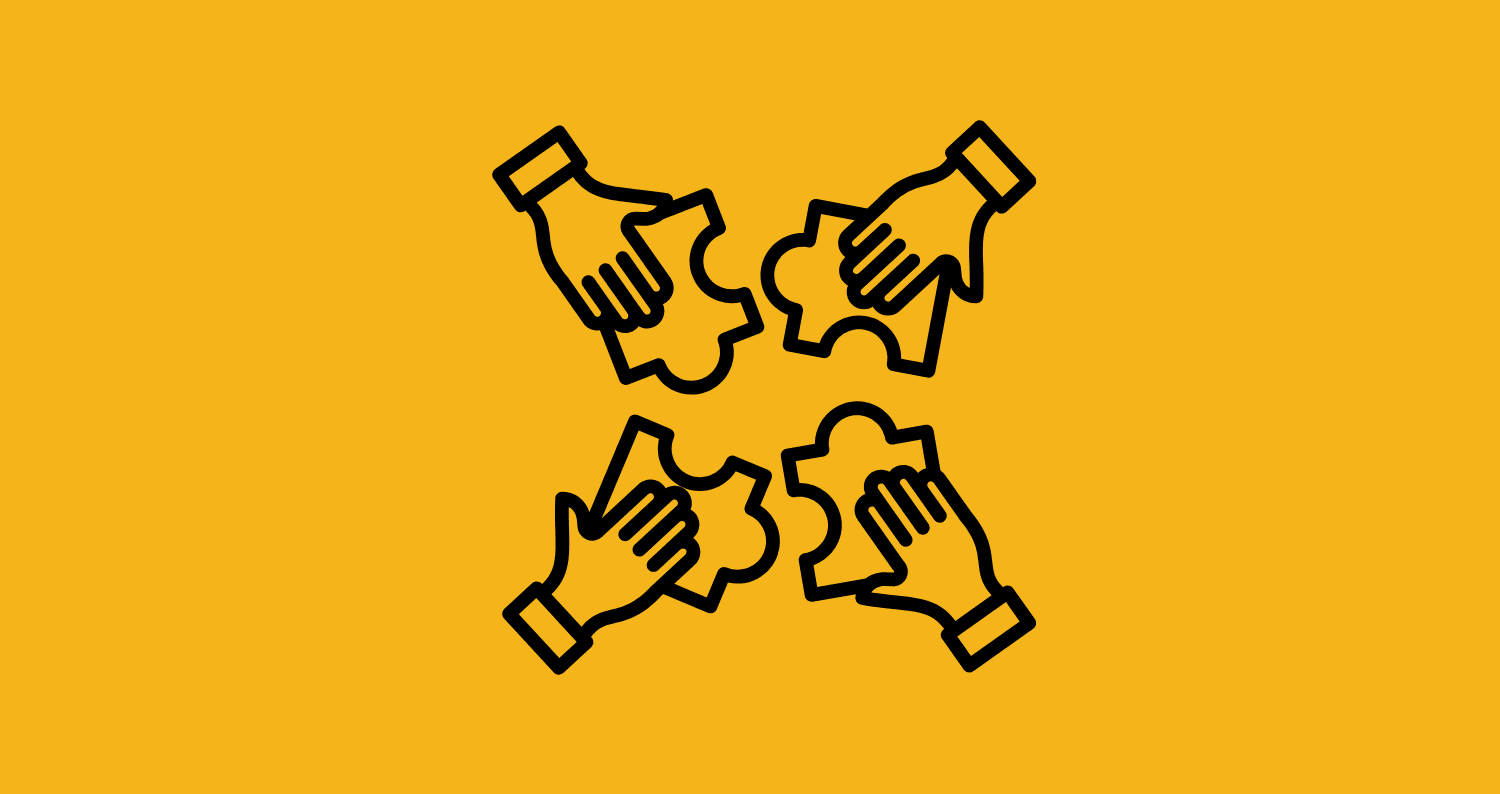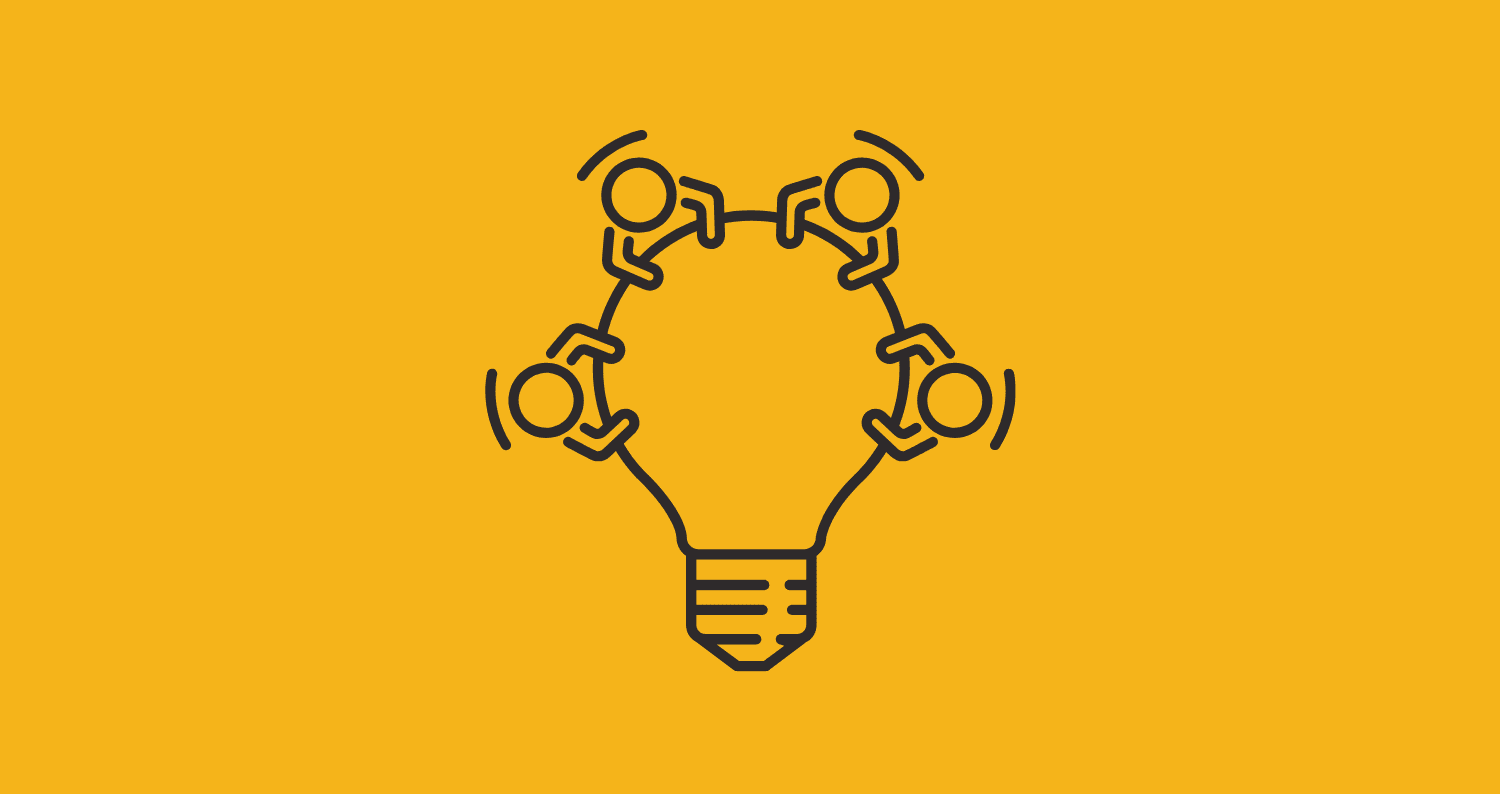
A Leader’s Guide to Transforming Teams.
As a leader, you’ve likely experienced the frustration of varying accountability levels across your team. Some team members consistently deliver without prompting, while others require constant follow-up despite having similar skills and resources. This discrepancy isn’t random—it reflects individuals operating at different rungs on what I call the Ladder of Accountability. What is the ladder of accountability? It’s a powerful framework that maps the progression of how team members take ownership of their work and responsibilities.
Understanding this ladder provides you with a powerful framework for diagnosing, addressing, and ultimately elevating your team’s execution capacity. Instead of seeing accountability as a binary trait that people either have or lack, the ladder reveals it as a developmental progression that can be systematically improved.
The Ladder of Accountability: A Definition
The Ladder of Accountability is a hierarchical framework that maps the progression of accountability behaviours from least to most effective. Each rung represents a distinct mindset and corresponding set of behaviours that determine how individuals respond to challenges, opportunities, and responsibilities.
Unlike traditional performance metrics that focus primarily on skills or knowledge, the accountability ladder addresses the fundamental execution patterns that often determine success regardless of technical capability. It provides both a diagnostic tool for identifying where team members currently operate and a developmental roadmap for helping them climb to higher levels.
The Six Rungs: From Victim to Owner
Rung 1: Victim Mentality
Core Belief: “Things happen to me, and I have no control.”
At the bottom rung of the ladder, individuals see themselves as victims of circumstances. They believe they have little or no control over outcomes and consistently attribute challenges to external factors beyond their influence.
Behavioural Indicators:
- Frequently uses language like “I couldn’t because…”
- Focuses extensively on obstacles rather than solutions
- Rarely offers proposals or suggestions
- Waits for direction rather than initiating action
Ladder of Accountability Example: A team member consistently misses deadlines, explaining each instance with a different external circumstance—the requirements changed, another department didn’t provide information, the timeline was unrealistic from the start. When asked about solutions, they respond with why various approaches won’t work rather than what might be possible.
Rung 2: Excuse Making
Core Belief: “I’m not responsible for this outcome.”
At the second rung, individuals acknowledge problems but focus their energy on explaining why they aren’t responsible. While more engaged than the victim mentality, this rung still represents a fundamentally reactive approach to accountability.
Behavioural Indicators:
- Creates detailed explanations for why expectations weren’t met
- Emphasises factors outside their control
- Demonstrates awareness of problems but deflects ownership
- Invests more energy in justification than resolution
Ladder of Accountability Example: When a client deliverable falls short of expectations, a team member produces an elaborate explanation involving multiple contributing factors—none of which include their own actions or decisions. They acknowledge the issue but frame it entirely as resulting from circumstances or other people’s actions.
Rung 3: Confusion/Uncertainty
Core Belief: “I don’t know what to do or how to proceed.”
The third rung represents a transitional phase where individuals stop denying responsibility but remain stuck due to uncertainty about how to move forward. This represents progress because they’ve begun to internalise ownership, even though they lack clear direction.
Behavioural Indicators:
- Asks numerous clarifying questions without taking action
- Expresses confusion about expectations or processes
- Seeks excessive guidance before proceeding
- Becomes paralysed when facing ambiguity
Ladder of Accountability Example: A marketing specialist tasked with improving campaign performance repeatedly asks for additional data, more specific guidelines, and clarification about priorities. Despite receiving reasonable direction, they remain hesitant to implement changes, continuously citing uncertainty about the “right” approach to take.
Rung 4: Wait and See
Core Belief: “I’ll take action once things become clearer or circumstances improve.”
At this rung, individuals understand what needs to be done but delay action until conditions seem more favourable. They’ve advanced beyond making excuses but still allow external factors to dictate their timeline for action.
Behavioural Indicators:
- Acknowledges what needs to be done but defers action
- Waits for “perfect” circumstances before proceeding
- Creates contingent commitments based on external factors
- Shows hesitation to commit to specific deliverables or timelines
Ladder of Accountability Example: A sales leader recognises the need to implement a new client outreach strategy but continues to delay, citing upcoming market changes, potential new tools, or team restructuring. Despite having sufficient information to begin, they consistently position current circumstances as “not quite right” for taking action.
Rung 5: Problem Solver
Core Belief: “I can find a way to make this work despite challenges.”
At the fifth rung, individuals shift from explaining problems to solving them. They actively seek solutions rather than waiting for perfect conditions and take ownership of finding ways to deliver despite obstacles.
Behavioural Indicators:
- Acknowledges challenges but focuses on possible solutions
- Takes initiative to resolve issues without prompting
- Proactively identifies potential obstacles and addresses them
- Communicates setbacks alongside proposed alternatives
Ladder of Accountability Example: When a critical vendor unexpectedly withdraws from a project, a team member immediately researches alternatives, creates a comparison matrix of options, and presents a recommended path forward—all before the next scheduled team meeting. Rather than escalating the problem, they bring potential solutions.
Rung 6: Owner
Core Belief: “I am fully responsible for achieving the desired outcome, regardless of circumstances.”
At the top of the ladder, individuals take complete psychological ownership of outcomes. They view all circumstances—even those technically outside their control—as their responsibility to manage or influence toward the desired result.
Behavioural Indicators:
- Speaks in terms of commitments rather than attempts
- Creates robust backup plans for critical deliverables
- Actively removes obstacles for themselves and others
- Takes responsibility for outcomes even when external factors contribute to challenges
Ladder of Accountability Example: A project manager encounters a significant budget cut midway through an initiative. Instead of explaining why objectives can’t be met, they immediately restructure the approach, negotiate with vendors, and reprioritise deliverables to preserve core outcomes. They never mention the constraint as an excuse, focusing entirely on what remains possible within the new parameters.
Using the Ladder as a Developmental Framework
Understanding the ladder provides the diagnostic foundation, but the real value comes from systematically helping team members climb to higher rungs. Here’s how to implement this as a developmental framework:
1. Assess Current Positions
Begin by observing where each team member typically operates on the ladder. Look for patterns rather than isolated incidents, as most individuals show some variability based on circumstances. The goal is to identify their “home rung”—the level they default to when facing challenges.
Practical Application:
- Document specific examples of accountability behaviours
- Note language patterns that indicate different rungs
- Identify variation across different types of responsibilities
- Observe responses to setbacks or unexpected challenges
2. Create Awareness Without Judgment
Most accountability issues stem from unconscious patterns rather than deliberate choices. Creating awareness of the ladder and helping team members recognise their current position is crucial for development.
Practical Application:
- Introduce the ladder framework to your entire team
- Share ladder of accountability examples that don’t single out individuals
- Ask team members to self-assess their typical responses
- Frame the ladder as a developmental tool rather than an evaluation mechanism
3. Establish Clear Expectations for Upward Movement
Once awareness exists, clearly articulate what operating at higher rungs looks like in your specific context. Provide concrete examples of behaviours at each level relevant to your team’s work.
Practical Application:
- Create role-specific descriptions of each ladder rung
- Share ladder of accountability examples specific to your industry or function
- Contrast responses to common scenarios at different rungs
- Highlight behaviours that exemplify upper-rung thinking
4. Implement Structured Development Conversations
Regular one-on-one discussions focused specifically on accountability development create the mechanism for upward movement. These conversations should balance supportive coaching with clear expectations.
Practical Application:
- Schedule dedicated accountability development conversations
- Review specific situations and discuss alternative responses
- Provide targeted feedback when observing rung-climbing behaviours
- Create action plans for practicing higher-rung responses
5. Recognise and Reinforce Progress
Climbing the ladder requires conscious effort and positive reinforcement. Creating recognition mechanisms for accountability progress accelerates development and confirms its value.
Practical Application:
- Acknowledge specific instances of higher-rung behaviour
- Share ladder of accountability examples from within your team
- Create peer recognition systems for accountability behaviours
- Integrate accountability development into performance reviews
Ladder of Accountability Examples Across Different Roles
To make this framework even more practical, let’s examine how the ladder manifests in different functional roles:
For Sales Teams
Rung 2 (Excuse Making): “We didn’t hit our numbers because the marketing leads were low quality this month, and two competitors lowered their prices.”
Rung 4 (Wait and See): “I know we need to implement the new outreach strategy, but let’s wait until after the seasonal dip to avoid skewing our results.”
Rung 6 (Owner): “Despite the market contraction, I’ve revised our approach to focus on retention and upselling while developing three new verticals that appear less affected by current conditions.”
For Technical Teams
Rung 1 (Victim): “We can’t possibly fix these bugs and implement new features with the current timeline and resources.”
Rung 3 (Confusion): “I’m not sure exactly what implementation approach would work best. Can we have a few more planning sessions before I start coding?”
Rung 5 (Problem Solver): “I spotted a potential architecture issue that might affect our timeline. I’ve sketched three alternative approaches with different trade-offs and a recommendation for which to pursue.”
For Leadership Roles
Rung 2 (Excuse Making): “Team performance is down because HR hasn’t approved our new hiring plan, and we’re operating with outdated tools.”
Rung 4 (Wait and See): “Let’s hold off on the reorganisation until next quarter when we’ll have more budget clarity and can do it properly.”
Rung 6 (Owner): “Given our current constraints, I’ve restructured our priorities and developed a phased implementation plan that delivers core value immediately while building toward our full vision.”
Common Obstacles to Climbing the Ladder
As you implement this framework, be aware of these common obstacles that can impede progress:
1. Environmental Reinforcement of Lower Rungs
If your broader organisation rewards or accepts lower-rung behaviours, individual development becomes more challenging. Pay attention to how accountability is modelled at all levels.
Solution: Create a “micro-culture” within your team with explicit accountability norms, even if they differ from the broader organisation.
2. Mixed Messages About Accountability
When leaders verbally emphasise accountability but personally demonstrate lower-rung behaviours, confusion and cynicism result.
Solution: Model upper-rung behaviours consistently, especially when facing significant challenges. Use your own accountability struggles as teaching moments.
3. Fear of Negative Consequences
Team members may hesitate to operate at higher rungs if they perceive greater accountability as creating exposure to blame or criticism.
Solution: Clearly separate learning-focused accountability from punitive measures. Celebrate instances where mistakes were made but owned and addressed.
4. Lack of Development Resources
Without targeted support, expectation alone rarely drives sustainable behavioural change.
Solution: Provide resources like coaching, mentorship, and structured practice opportunities specifically focused on accountability skills.
Measuring Progress: Accountability Metrics
Beyond observation, consider implementing these metrics to track accountability development across your team:
- Solution-to-Complaint Ratio: Track how frequently team members present solutions alongside identified problems
- Proactive Communication Index: Measure the percentage of issues reported by team members before external discovery
- Commitment Completion Rate: Monitor the fulfilment of specific commitments by deadline
- Excuse Frequency: Document how often external factors are cited as primary reasons for missed objectives
- Initiative Instances: Count unprompted actions taken to resolve obstacles or improve outcomes
The Accountability Ecosystem: Beyond Individual Development
While the ladder focuses on individual progression, creating an accountability ecosystem accelerates development by establishing supporting structures:
- Commitment Clarity Protocols: Systems that ensure all commitments have clear ownership, criteria, and deadlines
- Consequence Consistency: Appropriate positive and constructive consequences applied regardless of seniority or relationships
- Problem-Solving Frameworks: Structured approaches that guide team members toward solution-focused responses
- Accountability Language: Terminology that reinforces ownership and possibility rather than limitation and excuse
- Recognition Systems: Mechanisms that celebrate and reward upper-rung behaviours
The Bottom Line: Transforming Performance Through Progressive Accountability
The Ladder of Accountability provides a powerful framework for understanding and developing your team’s execution capacity. Rather than viewing accountability as an innate trait, this approach recognises it as a set of learnable behaviours that progress through predictable stages.
By helping your team members recognise their current position on the ladder and providing structured support for climbing higher, you create a foundation for dramatically improved performance—not through pushing harder, but through fundamentally shifting how they approach challenges and responsibilities.
The journey from victim to owner represents one of the most significant transformations possible in professional development. As a leader, there are few more valuable gifts you can give your team than the capacity to operate consistently at the upper rungs of the accountability ladder.
continue reading
More Playbooks...
Discover 7 common accountability scenarios that undermine team performance and learn practical conversation frameworks to address each one.
Discover how an accountability coaching program transforms team performance without adding pressure, time, or headcount.
Discover the 7 transformative benefits of a personal accountability coach that shift you from endless planning to consistent action.



